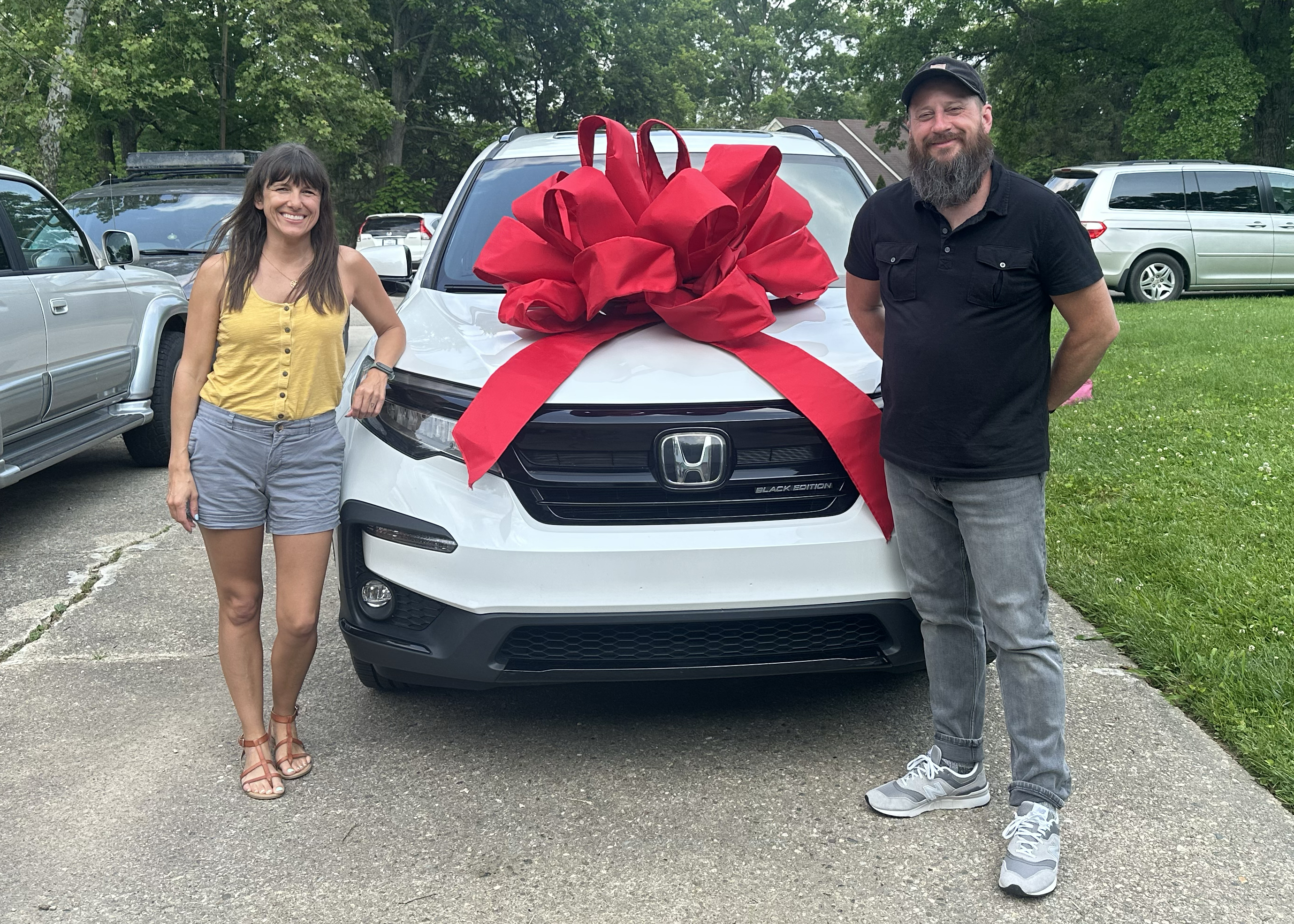Several years ago I did a blog post called “Composting Without a Bin“.

I still get questions from readers about that process. It’s been 5 years (at two different locations) that we’ve been composting.
This was 2016

and this is me and my little composting helper now.

We still don’t have a bin, but we got a little more sophisticated recently by using some wooden pallets to mark off where the compost goes.

The pile principal is still the same though.

For now I use a pitcher or a bowl for our compostable scraps, but I am hoping to upgrade that VERY SOON! The lesson though, is that it doesn’t have to be complicated. You can truly compost without any special tools at all.
With official first day of spring behind us I thought now would be a good time to write up a little Q&A answering some of those questions I have received along with a few other things I’ve learned since starting this endeavor.
Does it stink?
No, it smells like dirt. It’s not the same as fruit that is decomposing. It is “dirty” though, literally. We are fortunate to have a large yard so we can have our pile a decent amount away from our house, but when our kids have friends over we have to let them know it’s not a play area.
Does it attract animals?
I have had people ask me if we get rodents or animals that dig through our pile as if it were trash. That has NEVER been an issue for us. We don’t seem to have a lot of raccoons and we don’t have bears in the area, but we do see plenty of deer, chipmunks, moles, fox, mice and dogs. For some people, animals are something that could certainly inhibit your chances of doing a compost pile that is exposed. As long as the scraps are buried in plenty of leaves and you are certain you haven’t added any meat, dairy, or other noncompostable items to your pile you could be like us and have no issues at all.
How long do you leave your pile before using it?
We use our pile in the spring when we garden and then we stop adding to it in the winter. So it has about 7 months to collect and then from November to March, we let the pile decompose. Sometimes I feel bad about throwing away scraps and we end up starting another pile. The hard part is we don’t have a ton of grass clippings, if any, in the winter. So it’s hard to keep the materials balanced. I guess this isn’t a clear cut answer. Some people use thermometers and special equipment for their compost. We just eyeball it. Our goal is to do the traditional three bin approach. One for starting the compost, one for letting it sit and heat up, and the last one to turn and use.
Can I compost weeds?
Okay, this was a question I asked! I was worried that the weeds would try to take root in the compost pile and then propagate. Weeds are so stubborn! A quick google search taught me that I can and should compost the weeds I pull. The sooner the better so that the weeds don’t flower and seed. Weeds can grow in compost, but again if you are tossing, watering, and balancing your pile it shouldn’t be a problem.
We love having a compost pile. It’s eco friendly and a great educational tool. The kids even add worms when they find them. Our latest development is adding what some farmers call “black gold”. Can you guess what that is?
It’s CHICKEN POOP.

We’ve got 9 little chickens now. While chicken droppings alone aren’t great fertilizer because they are super high in nitrogen, if you cool it down with some carbon compost it’s natural miracle grow. I am really looking forward to the garden bounty this year. Especially with all the COVID-19 stuff having a little suburban green life has been good for us.

My take on composting is that it takes a little extra work, but it’s totally worth it.





Leave A Comment